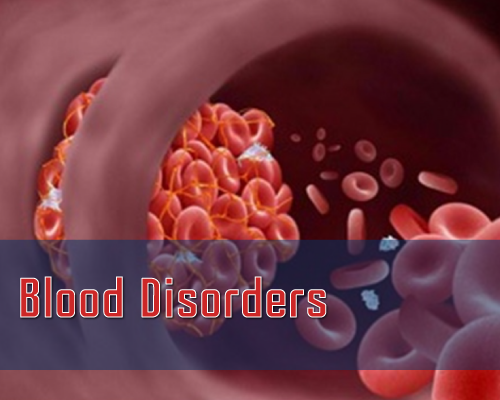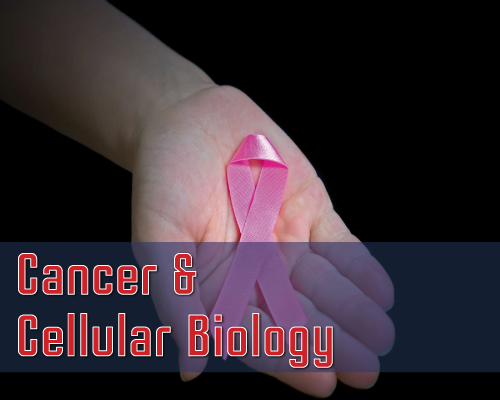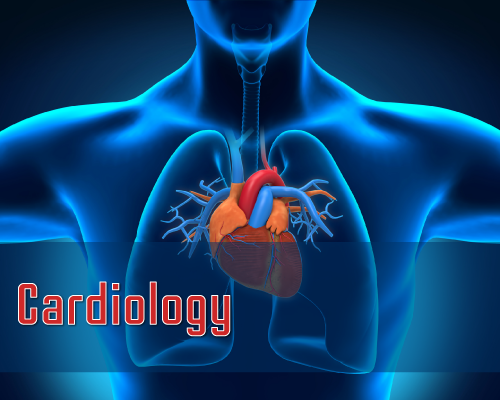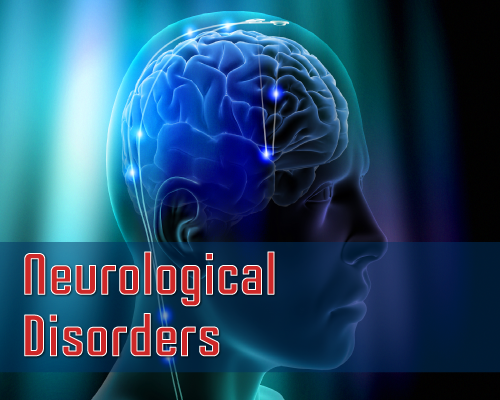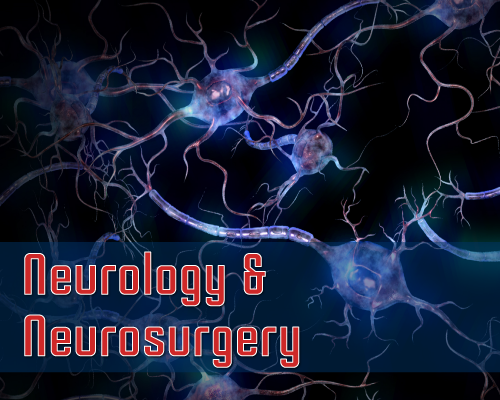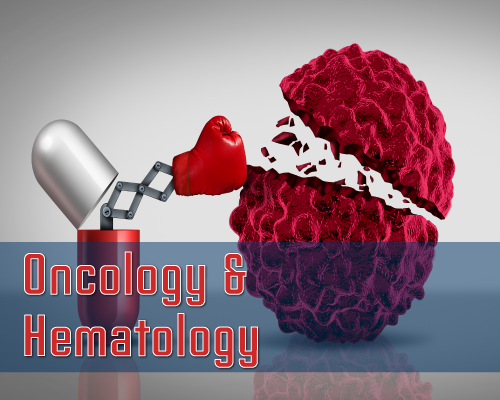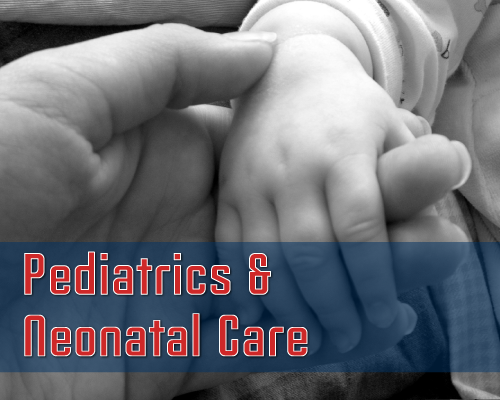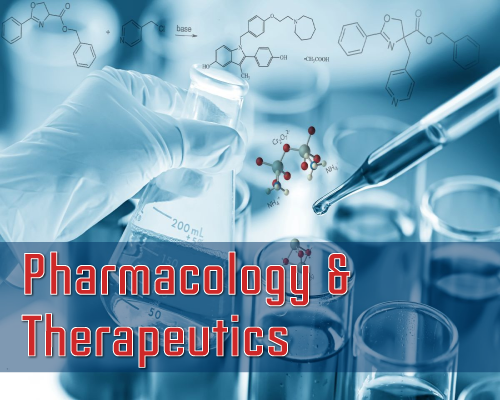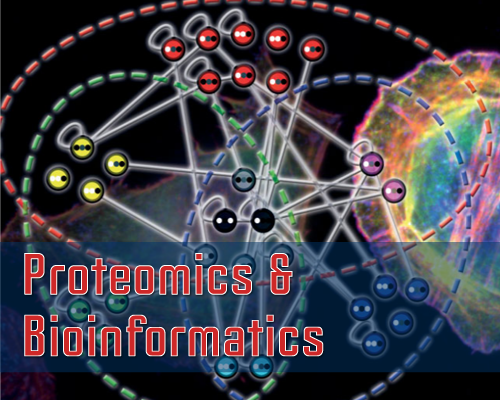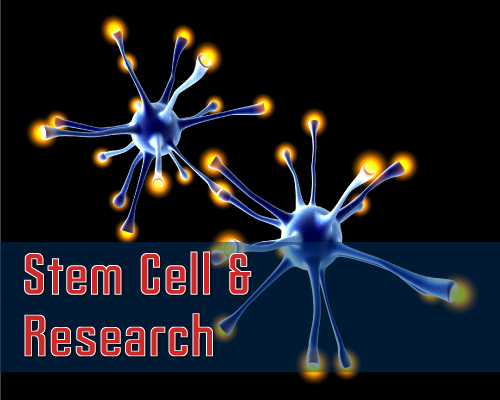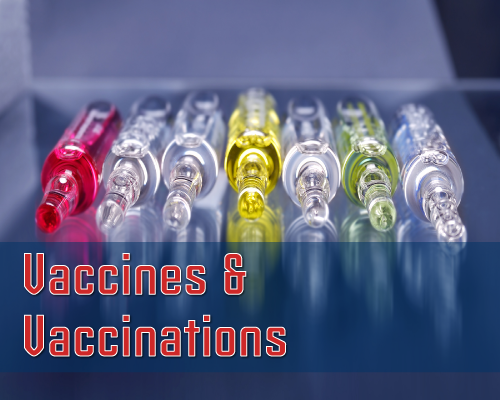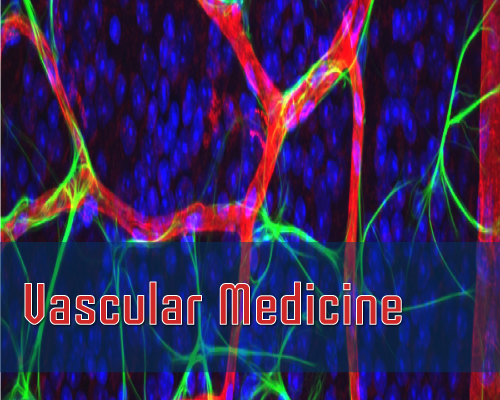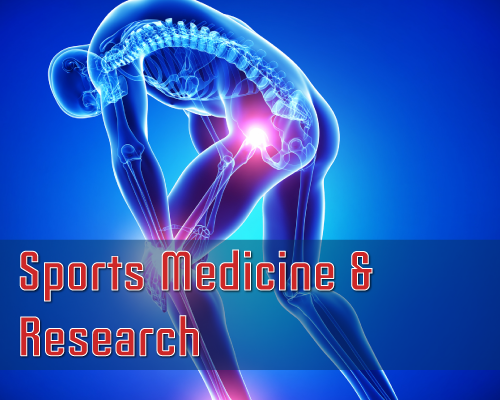Gillian Dwyer and Qiongqiong Zhou
Department of Biological Sciences, Denison University, 100 West College Street, Granville, OH 43023, USA
*Address for Correspondence: Qiongqiong Zhou, Department of Biological Sciences, Denison University, 100 West College Street, Granville, OH 43023, USA, E-mail: [email protected]
Dates: Submitted: 01 February 2018; Approved: 12 March 2018; Published: 16 March 2018
Citation this article: Dwyer G, Zhou Q. An Overview of Hepatocellular Carcinoma. Int J Hepatol Gastroenterol. 2018; 4(1): 029-0035.
Copyright: © 2018 Zhou Q, et al. This is an open access article distributed under the Creative Commons Attribution License, which permits unrestricted use, distribution, and reproduction in any medium, provided the original work is properly cited.
Introduction
The frequency and mortality of liver cancer has become an increasingly urgent issue. Liver cancer is the second most common cause of cancer related death with an incidence rate that has more than tripled since 1980 [1-2]. Representing approximately 80% of liver tumors, Hepatocellular Carcinoma (HCC) is an aggressive type of liver cancer composed of malignant hepatocytes1 which originate within the liver tissue itself [1,3]. HCC predominantly affects East and South Asia, the Middle East, and Middle and Western Africa, while lower rates are seen in North and South America as well as Northern and Eastern Europe [2,4-5]. Because HCC is often diagnosed after it metastasizes, the overall five-year survival rate for patients is between 14-18% [2-3].
Risk Factors
Although there is no direct cause of HCC, there are many risk factors that are thought to contribute to its formation.
Viral
Most commonly linked to the development of HCC is exposure to hepatitis B (HBV) or Hepatitis C (HCV) virus [3,6-11]. HBV is able to integrate its DNA into the host genome, altering both the chromosomal stability and endogenous functions of the cell by promoting proliferation and immortality [12-16]. In contrast, HCV is unable to integrate into the host genome, but instead induces the responses of the host cell through interactions with its own viral proteins, possibly contributing to the transformation of the host cell [17]. Other forms such as Hepatitis Delta (HDV) or Hepatitis G (HGV) virus have been hypothesized to lead to HCC as well [11].
Carcinogenic
The two major substances associated with HCC are aflatoxin and alcohol [3,6,18-27]. Aflatoxins, a group of mycotoxins produced by mold, are consumed through corn, peanuts, milo, sorghum, copra, or rice, which are usually contaminated through improper growth, harvest, or storage [1,3,18-22,28]. Aflatoxins frequently mutate the third base at codon 249 of Tp53, a tumor suppressor gene, ultimately resulting in loss of function [6,13,22,29]. Additionally, alcohol consumption causes cirrhosis of the liver, another leading mechanism for the development of HCC [3,6,22-27,30]. Estrogen-progestogen oral contraceptives, tobacco and caffeine have also been reported to potentially increase the chances of HCC [22,31-32].
Physical
Demographic factors, such as age and sex, and health-related factors, such as weight and medical conditions, may play a key role in the development of HCC [3,6,10,22,33-35]. Elderly people and men are significantly more at risk for HCC than youth or women [1-4,5-6,36]. The disparity in age could be due to a longer duration of exposure to carcinogens, while the variation in sex could reflect a greater chance in alcohol abuse or a possible tumorigenic consequence of androgens [6]. Hereditary hemochromatosis, a condition resulting in abnormally high levels of iron stored throughout the body, has also been commonly observed as a factor for HCC, due to its likelihood of causing cirrhosis [3,6,22-23]. Additionally, both obesity and diabetes are widely thought to pose a risk for HCC [3,22].
Clinical Signs & Symptoms
In many cases, symptoms do not appear until HCC is advanced but, when present, are vague and not specific to HCC itself [3]. However, the most commonly presented signs and symptoms of HCC are: weakness and fatigue, upper right quadrant pain, a palpable liver mass, a nodular liver, loss of appetite and weight loss, hepatic bruits, ascites, pruritus, splenomegaly, jaundice, fever, peripheral edema, gastrointestinal bleeding, variceal bleeding, hepatic encephalopathy, nausea and vomiting, asthenia, cachexia, and early satiety [2,3,35,37-41].
Diagnosis
The diagnostic process first begins with the analysis of risk factors and a physical examination where the abdomen, with a focus on the liver, is palpated for abnormalities [3]. Laboratory tests may be performed to confirm risk factors and evaluate the functionality of the liver [3]. If abnormalities are indicated, imaging of the liver will be conducted [3,42-44]. Imaging of the liver is divided into three phases: the arterial phase, portal venous phase, and a late phase [44]. Ultrasound (US) is the most common imaging technique in the detection of HCC [43,44]. In addition to US, ultrasound contrast agents can be used, where gas bubbles stabilized by an outer shell allow for clear definition and visualization of the three phases [44,45]. Another method of imaging, Multidetector Row Helical Computed Tomography (MDCT), results in improved detection and characterization of tumors due to precise spatial and temporal resolution [42,44,46]. Further, Magnetic Resonance Imaging (MRI) uses pulse sequences to produce visual information about the liver and biliary tree as well as the patterns of tumor enhancement [42,44,47-49]. The last imaging technique, Positron Emission Tomography (PET), not only allows for cross-sectional imaging of the whole body, but also for small lesions to be detected through a high quality image [44,50]. If dynamic imaging is unable to confirm HCC, a liver biopsy may be performed [3,42,43]. A sample of tissue or fluid is extracted from the liver and examined, providing a conclusive diagnosis [3,42,43].
Molecular Genetics
Disruption to signaling pathways in HCC can lead to many consequences
1. Disturbances to the regulation of the cell cycle, commonly a result of a p53 point mutation or loss of heterozygosity
2. Increased angiogenesis due to the secretion of Vascular Endothelial Growth Factor (VEGF) or Platelet-Derived Growth Factor (PDGF)
3. Avoidance of apoptosis, resulting from deregulation of apoptotic pathways
4. Immortality through the reactivation of Telomerase Reverse Transcriptase (TERT) [14,51-54].
The two most common mutational events which contribute to HCC are point mutations or small deletions which activate β-catenin and inactivate p53 [1,13,14,55-59]. As summarized before, HBV and HCV are thought to directly interact with the signaling cascades of the host cell, promoting hyperproliferation through inflammation and hepatocellular death and therefore contributing to either oncogenic effects or the risk of cell transformation [51].
Wnt/β-Catenin Signaling
In the liver, this pathway regulates hepatocyte proliferation, liver tumorigenesis, and is responsible for the accumulation of β-catenin in the cytoplasm as well as its translocation into the nucleus [51,55,60]. β-catenin is a protein involved in the regulation of cell adhesion and gene transcription [51,55,60]. When Wnt binds to Frizzled (Fz), its cell-surface receptor, the complex formed ultimately leads to the inactivation of Glycogen Synthetase Kinase 3β (GSK3β) which prevents β-catenin from being phosphorylated and therefore degraded [51,55,60]. Once accumulated, β-catenin travels to the nucleus and suppresses the expression of certain genes to promote cell proliferation, survival, and angiogenesis [51]. HCC with β-catenin mutations are more likely to be associated with HCV as its protein acts as a Wnt ligand [51,55,61,64,67].
p53 Signalingp53 is a crucial protein which regulates the cell cycle and functions as a tumor suppressor [14,51,68,69]. Murine Double Minute 2 (MDM2) regulates p53 activity and, if increased without regulation, may lead to greater ubiquitylation and degradation of p53 [51,70]. A consequence of aflatoxin, loss of p53 activity can be localized to a hot-spot at codon 249, which substitutes a serine for arginine (R249S) [51]. In contrast, another mutation in p53 could be due to HBV X protein (HBVX), which may inactivate certain activities such as p53-mediated transcription and apoptosis, regulation of the cell cycle checkpoints, and DNA repair [13,14,51,71,72]. As such, HCC with p53 mutations are more likely to be associated with aflatoxin and HBV [51,71,73,74].
Tissue Changes and Metastasis
Cells and tissue within the liver change significantly as HCC progresses. Cancerous hepatocytes are characterized by
1. Clear, fatty, or eosinophilic cytoplasm
2. High levels of accumulated copper or iron
3. A lack of connective fibrous septa
4. A fibrous, peripheral encapsulation
5. Anaplasia
6. Expansive nodules which compress the adjacent liver
7. Well-developed but unpaired arteries
8. A significant decrease or loss of the reticulin framework
9. Thickened and possibly multilayer trabeculae
10. High nuclear to cytoplasmic ratio
11. Irregular nuclei with prominent nucleoli
12. A loss in cell to cell contact
13. Fibroblastic phenotypes [51,75-79].
HCC metastasis can be divided into two categories: intrahepatic and extrahepatic. Intrahepatic metastasis is characterized by a significant frequency of tumor thrombi within the portal vein, hepatic vein, and inferior vena cava [78,80]. Extrahepatic metastasis is characterized by cancerous hepatocytes most commonly translocating to the lungs, bones, adrenal gland, brain, and lymph nodes [78,80-84]. Also, rarely reported is translocation to the esophagus, stomach, small intestine, colon, spleen, peritoneum, kidneys, uterus, ovaries, breasts, thyroid gland, parotid gland, testes, heart, Central Nervous System (CNS), and skin [78,80,85-88].
Treatment
Treatment for HCC can be guided by many staging systems, yet the Barcelona Clinic Liver Cancer (BCLC) Staging System is the most widely accepted and results in better prognoses [42,89-92]. The BCLC classifies HCC, and therefore treatment, into five stages depending on liver function, tumor progression, physical status, and cancer-related symptoms [42,91-93].
Treatment for BCLC stages 0 and A
Treatment for early-stage HCC usually consists of curative therapies such as surgical resection, liver transplantation, or ablation [42,93]. Surgical resection is the most common treatment and, depending on tumor stage and liver function, five-year Overall Survival (OS) rate post-treatment ranges between 40-70% [42,93-102]. Indicated for patients with feasible tumor location and sufficient liver reserve and remnant, resection obstructs the tumor-feeding portal vein and attempts to enlarge the remaining portion of the liver [93,103]. Liver transplantation is limited by the scarcity of donors but, when available, eliminates cirrhosis and boasts a five-year OS of about 70% [42,94,104]. Liver transplant is usually indicated for patients with moderate to severe cirrhosis [93]. Ablation of the tumor is indicated only when resection and transplant are not advisable and access to the tumor is percutaneous or minimally invasive [42]. Five-year OS rate is around 59% [42].
Treatment for BCLC stages B and C
Treatment for intermediate- and advanced-stage HCC usually consists of palliative therapies such as Transcatheter Arterial Chemoembolization (TACE), targeted therapy, or radiation therapy [42,93,104,105]. TACE involves the administration of chemotherapy or vaso-occlusive particles through cannulation or use of drug-eluting beads for targeting selected hepatic arteries [42,91,93,106,107]. Targeted therapies such as Sorafenib are indicated for patients with relatively well functioning livers [42,93]. Sorafenib is a multiple kinase inhibitor which reduces angiogenic and proliferative effects buy suppressing the activity of Raf kinases as well as many growth factors [42,91,92,108,109]. Chemotherapy, or radiation therapy, is considered an atypical form of treatment as HCC is chemotherapy-refractory and often not tolerated well in patients with significantly poor liver function [42,93,110]. However, advancements in technology have allowed direct and precise radiation to the liver, resulting in a more tolerated form of focal HCC treatment [42,111].
Treatment for BCLC stage D
Treatment for end-stage HCC usually consists of supportive care and possibly palliative therapies [42].
Prevention
Approaches to the prevention of HCC are divided into two categories
1. Primary
2. Secondary
Primary prevention involves the prevention of exposure to risk factors while secondary prevention involves the prevention of HCC development in patients with risk factors [112].
Primary Prevention: In cases of HCC related to viral hepatitis, the infant vaccination for HBV has shown to be successful in preventing HBV transmission from the infected mother to her newborn during birth [112]. In cases of HCC unrelated to viral hepatitis, elimination of food at risk for contamination by aflatoxin may reduce the frequency of HCC [112,113]. Additionally, certain carcinogenic and physical risk factors may be eliminated through education and medical care [112,114].
Secondary Prevention: In cases of HCC related to viral hepatitis, alpha interferon as well as nucleoside and nucleotide analogs suppress viral replication and therefore reduce the chances of HCC [112,115-126]. Additionally, it is thought that the reduction or suppression of hepatic inflammation could reduce the risk of HCC development [112]. In cases of HCC related to aflatoxin, chlorophyllin, a water-soluble salt of chlorophyll, acts as an interceptor molecule and reduces carcinogenic effects of aflatoxin, as well as acting as an antioxidant [112,127,128]. Furthermore, Oltipraz, a dithiolethione originally intended as an antischistosomal drug, may promote enzymes that detoxify aflatoxin [112].
Discussion
In recent history, vast improvements in the understanding of HCC have been made. Through copious research regarding HCC, significant risk factors have been determined, many clinical signs and symptoms have been identified, diagnostic techniques have been improved, insight into the molecular genetics of the cancer has been enhanced, patterns in tissue changes and metastasis have been observed, advances in successful treatment have been made, and knowledge regarding prevention has been developed. However, despite the progression science and technology has seen in terms of HCC, there are still great lengths to be covered before the disease is cured.
As with all research, there are certain limitations and impossibilities. Nonetheless, continued improvements and, eventually, a cure will not be discovered in the absence of creativity. Many studies show that cancer cells can be targeted through the blockage of overactive oncogenes [13]. However, what if it were possible to target cancer cells through the promotion of previously lost tumor suppressor genes? Additional studies have shown that reactivation of p53, however brief, can result in complete tumor regression [51,129].
Should DNA damage be detected within a cell, protein kinases are activated. One protein kinase, ATM serine/threonine kinase, phosphorylates p53 and therefore increases the level of p53 within the cell. While the level of MDM2 increases as p53 does, MDM2 cannot ubiquity late or degrade p53 while p53 is phosphorylated. Additionally, p14ARF, an alternate reading frame protein, regulates MDM2 by binding to it. Therefore, a drug that expressed both constitutively active ATM serine/threonine kinase and p14ARF could inhibit or possibly, regress HCC development in patients. If combined with known therapies, scientists may find an effective treatment strategy for patients with HCC.
References
- Theise ND, Chen CJ, Kew MC. 2014. 5.6 Liver Cancer. In: Stewart BW, Wild CP. World Cancer Report 2014. Lyon, France: International Agency for Research on Cancer. 572-585. https://goo.gl/hnmeYH
- American Cancer Society. Cancer Facts & Figures 2017. Atlanta, GA: American Cancer Society. 2017. 1-71. https://goo.gl/VQEvVg
- Wexler B, Oberleitner M. 2013. Liver Cancer. Farmington, MI: Gale Encyclopedia of Nursing and Allied Health. 2.
- Jemal A, Bray F, Center M, Ferlay J, Ward E, Forman D. Global Cancer Statistics. CA Cancer J Clin. 2011; 61: 69-90. https://goo.gl/QRwFYy
- McGlynn KA, London WT. The global epidemiology of hepatocellular carcinoma: present and future. Clinics in Liver Disease. 2011; 5: 223-243. https://goo.gl/LnyUrw
- Fattovich G, Stroffolini T, Zagni I, Donato F. Hepatocellular Carcinoma in Cirrhosis: Incidence and Risk Factors. Gastroenterology. 2004; 127: S35-S50. https://goo.gl/BYySCv
- Tsukuma H, Hiyama T, Tanaka S, Nakao M, Yabuuchi T, Kitamura T, et al. Risk factors for hepatocellular carcinoma among patients with chronic liver disease. N Engl J Med. 1993; 328:1797-1801. https://goo.gl/fsczdF
- Chen TH, Chen CJ, Yen MF, Lu SN, Sun CA, Huang GT, et al. Ultrasound screening and risk factors for death from hepatocellular carcinoma in a high risk group in Taiwan. Int J Cancer. 2002; 98: 257-261. https://goo.gl/JaikVS
- Velasquez RF, Rodriguez M, Navascues CA, Linares A, Perez R, Sotorrios, et al. Prospective analysis of risk factors for hepatocellular carcinoma in patients with liver cirrhosis. Hepatology. 2003; 37: 520-527. https://goo.gl/tEpA7Z
- Sangiovanni A, Del Ninno E, Fasani P, De Fazio C, Ronchi G, Romeo R, et al. Increased survival of cirrhotic patients with a hepatocellularcarcinoma detected during surveillance. Gastroenterology. 2004; 126: 1005-1014. https://goo.gl/jQ4w1u
- Kew MC. Hepatitis viruses other than hepatitis B and C viruses as causes of hepatocellular carcinoma: an update. Journal of Viral Hepatitis. 2013; 20: 149-157. https://goo.gl/FpzxBi
- Hai H, Tamori A, Kawada N. Role of hepatitis B virus DNA integration in human hepatocarcinogenesis. World J Gastroenterol. 2014; 20: 6236-6243. https://goo.gl/hmuLbk
- Ozen C, Yildiz G, Dagcan AT, Cevik D, Ors A, Keles U, et al. Genetics and epigenetics of liver cancer. N Biotechnol. 2013; 30: 381-384. https://goo.gl/1HM7vq
- Ozturk M, Batur T, Ekin U, Erdogan A, Iscan E, Keles U, et al. Molecular Pathogenesis of Liver Cancer. J Gastrointest Cancer. 2017; 48: 222-224. https://goo.gl/cGoGJH
- Brechot C, Pourcel C, Louise A, Rain B, Tiollais P. Presence of integrated hepatitis B virus DNA sequences in cellular DNA of human hepatocellular carcinoma. Nature. 1980; 286: 533-535. https://goo.gl/QkXqj4
- Brechot C, Gozuacik D, Murakami Y, Paterlini Brechot P. Molecular bases for the development of hepatitis B virus (HBV)-related hepatocellular carcinoma (HCC). Seminars in Cancer Biology. 2000; 10: 211-231. https://goo.gl/75tW9m
- Jeong SW, Jang JY, Chung RT. Hepatitis C virus and hepatocarginogenesis. Clin Mol Hepatol. 2012; 18: 347-356. https://goo.gl/QJMMfV
- Kensler TW, Roebuck BD, Wogan GN, Groopman JD. Aflatoxin: A 50-Year Odyssey of Mechanistic and Translational Toxicology. Toxicol Sci. 2011; 120: S28-S48. https://goo.gl/4NtTKi
- Bhat RV, Krishnamachari KA. Follow-up study of aflatoxic hepatitis in parts of western India. The Indian Journal of Medical Research. 1977; 66: 55-58. https://goo.gl/iYFuEG
- Bosch FX, Munoz N. Prospects for epidemiological studies on hepatocellular cancer as a model for assessing viral and chemical interactions. IARC Sci Publ. 1988; 427-438. https://goo.gl/zDrz4T
- Busby WF, Wogan GN. Aflatoxins. In: Penning TM. Chemical Carcinogens. Washington, DC: American Chemical Society. 1984. 945-1136.
- Chuang S-C, La Vecchia C, Boffetta P. Liver cancer: Descriptive epidemiology and risk factors other than HBV and HCV infection. Cancer Lett. 2009; 286: 9-14. https://goo.gl/KTevvW
- Greenblatt MS, Bennett WP, Hollstein M, Harris CC. Mutations in the p53 tumor suppressor gene: clues to cancer etiology and molecular pathogenesis. Cancer Res. 1994; 54: 4855-4878. https://goo.gl/ffdyJx
- Boffetta P, Hashibe M. Alcohol and cancer. Lancet Oncology. 2006; 7: 149-156. https://goo.gl/2JXXba
- Kuper H, Ye W, Broome U, Romelsjo A, Mucci LA, Ekbom A, et al. The risk of liver and bile duct cancer in patients with chronic viral hepatitis, alcoholism, or cirrhosis. Hepatology. 2001; 34: 714-718. https://goo.gl/nKsx2C
- Donato F, Tagger A, Gelatti U, Parrinello G, Boffetta P, Albertini A, et al. Alcohol and hepatocellular carcinoma: the effect of lifetime intake and hepatitis virus infections in men and women. Am J Epidemiol. 2002; 155: 323-331. https://goo.gl/4GBuex
- Bagnardi V, Blangiardo M, La Vecchia C, Corrao G. A meta- analysis of alcohol drinking and cancer risk. Br J Cancer. 2001; 85: 1700-1705. https://goo.gl/wszpNg
- World Health Organization & International Agency for Research on Cancer. IARC Monographs on the Evaluation of Carcinogenic Risks to Humans: Tobacco Smoke and Involuntary Smoking. Lyon, France: IARC Press. 2004; 83; 1-1438. https://goo.gl/kJmAoW
- Fujimoto A, Totoki Y, Abe T, Boroevich KA, Hosoda F, Nguyen HH, et al. Whole-genome sequencing of liver cancers identifies etiological influences on mutation patterns and recurrent mutations in chromatin regulators. Nat Genet. 2012; 44: 760-764. https://goo.gl/EP4v6E
- Croce CM. Causes and consequences of microRNA dysregulation in cancer. Nat Rev Genet. 2009; 10: 704-714. https://goo.gl/nZMssY
- World Health Organization & International Agency for Research on Cancer. IARC Monographs on the Evaluation of Carcinogenic Risks to Humans: Tobacco Smoke and Involuntary Smoking. Lyon, France: IARC Press. 2004; 83; 1-1438. https://goo.gl/kJmAoW
- La Vecchia C. Coffee, liver enzymes, cirrhosis and liver cancer. J Hepatol. 2005; 42: 444-446. https://goo.gl/vmxzJp
- Fracanzani AL, Conte D, Fraquelli M, Taioli E, Mattioli M, Losco A, et al. Increased cancer risk in a cohort of 230 patients with hereditary hemochromatosis in comparison to matched control patients with non-iron-related chronic liver disease. Hepatology. 2001; 33: 647-651. https://goo.gl/Bczk4E
- Zaman SN, Melia WM, Johnson RD, Portmann BC, Johnson PJ, Williams R. Risk factors in development of hepatocellular carcinoma in cirrhosis: prospective study of 613 patients. Lancet. 1985; 1: 1357-1360. https://goo.gl/muLRV6
- Bolondi L, Sofia S, Siringo S, Gaiani S, Casali A, Zironi G, et al. Surveillance program of cirrhotic patients for early diagnosis and treatment of hepatocellular carcinoma: a cost effectiveness analysis. Gut. 2001; 48: 251-259. https://goo.gl/a9ddDJ
- Bosman F, Carneiro F, Hruban R, Theise ND. WHO Classification of Tumours of the Digestive System. 4th ed. Lyon, France: International Agency for Research on Cancer. 2010.
- Sun VC, Sarna L. Symptom management in hepatocellular carcinoma. Clin J Oncol Nurs. 2008; 12: 759-766. https://goo.gl/Ag7tSU
- Di Bisceglie AM. Epidemiology and clinical presentation of hepatocellular carcinoma. J Vasc Interv Radiol. 2002; 13: 169-171. https://goo.gl/mmfJsd
- Bartlett DL, Carr BI, Marsh JW. Cancer of the liver. In: DeVita J, Vincent T, Hellman S, Rosenberg SA, editors. Cancer: Principles & practice of oncology. 7th ed. Philadelphia, PA: Lippincott Williams & Wilkins. 2005; 986-1008.
- Cahill BA, Braccia D. Current treatment for hepatocellular carcinoma. Clin J Oncol Nurs. 2004; 8: 393-399. https://goo.gl/1Nb96x
- Lin MH, Wu PY, Tsai ST, Lin CL, Chen TW, Hwang SJ. Hospice palliative care for patients with hepatocellular carcinoma in Taiwan. Palliat Med. 2004; 18: 93-99. https://goo.gl/XB2hLF
- PDQ® Adult Treatment Editorial Board. PDQ Adult Primary Liver Cancer. Bethesda, MD: National Cancer Institute. 2017.
- Attwa MH, El-Etreby SA. Guide for diagnosis and treatment of hepatocellular carcinoma. World J Hepatol. 2015; 7: 1632-1651. https://goo.gl/hLwXkg
- Ariff B, Lloyd CR, Khan S, Shariff M, Thillainayagam AV, Bansi DS, et al. Imaging of liver cancer. World J Gastroenterol. 2009; 15: 1289-1300. https://goo.gl/Jm5LjC
- Cosgrove DO, Eckersley R. Contrast-enhanced ultrasound: Basic physics and technology overview. In: Lencioni R. Enhancing the role of ultrasound with ultrasound contrast agents. Pisa, Italy: Springer. 2006; 3-14. https://goo.gl/thr7B5
- Weg N, Scheer MR, Gabor MP. Liver lesions: improved detection with dual-detector-array CT and routine 2.5-mm thin collimation. Radiology. 1998; 209: 417-426. https://goo.gl/bJ19hV
- Semelka RC, Helmberger TK. Contrast agents for MR imaging of the liver. Radiology. 2001; 218: 27-38. https://goo.gl/bJ19hV
- Bellin MF. MR contrast agents, the old and the new. Eur J Radiol. 2006; 60: 314-323. https://goo.gl/i4EYGr
- Gandhi SN, Brown MA, Wong JG, Aguirre DA, Sirlin CB. MR contrast agents for liver imaging: what, when how. Radiographics. 2006; 26: 1621-1636. https://goo.gl/j1rijg
- Meikle SR, Dahlbom M. Positron Emission Tomography (PET). In: Ell PJ, Gambhir SS. Nuclear medicine in clinical diagnosis and treatment. Edinburgh, Scotland: Churchill Livingstone. 2004; 1827-1843.
- Wang H, He Y, Yang W. 2012. Signal Transduction of Hepatocellular Carcinoma. In: Gu J. Primary Liver Cancer: Challenges and Perspectives. Hangzhou, China: Zhejiang University Press. 179-215.
- Nault JC, Calderaro J, Di Tommaso L, Balabaud C, Zafrani ES, Bioulac-Sage P, et al. Telomerase reverse transcriptase promoter mutation is an early somatic genetic alteration in the transformation of premalignant nodules in hepatocellular carcinoma on cirrhosis. Hepatology. 2014; 60: 1983-1992. https://goo.gl/1FJ9k1
- Cevik D, Yildiz G, Ozturk M. Common telomerase reverse transcriptase promoter mutations in hepatocellular carcinomas from different geographical locations. World J Gastroenterol. 2015; 21: 311-317. https://goo.gl/BwNCNj
- Buendia MA. Genetic alterations in hepatoblastoma and hepatocellular carcinoma: common and distinctive aspects. Med Pediatr Oncol. 2002; 39: 530-535. https://goo.gl/bTobxi
- Wong C, Lin Ng IO. Genomics of Hepatocellular Carcinoma. In: Gu J. Primary Liver Cancer: Challenges and Perspectives. Hangzhou, China: Zhejiang University Press. 2012. 45-78. https://goo.gl/w1MJGR
- Guichard C, Amaddeo G, Imbeaud S, Ladeiro Y, Pelletier L, Maad IB, et al. Integrated analysis of somatic mutations and focal copy-number changes identifies key genes and pathways in hepatocellular carcinoma. Nature Genetics. 2012. 4496: 694-698. https://goo.gl/8QmwzD
- Ozturk M. Genetics and epigenetics of liver cancer. Toxicology Letters. 2016; 258S: S12-S13. https://goo.gl/UQJeRp
- Ozturk M. Genetic aspects of hepatocellular carcinogenesis. Seminars in Liver Disease. 1999; 19: 235-242. https://goo.gl/LnWwXD
- Ozturk M, Arslan-Ergul A, Bagislar S, Senturk S, Yuzugullu H. Senescence and immortality in hepatocellular carcinoma. Cancer Letters. 2009; 286: 103-113. https://goo.gl/1srkRU
- Morin PJ. Beta-catenin signaling and cancer. BioEssays. 1999; 21: 1021-1030. https://goo.gl/1ckWRZ
- Wong CM, Fan ST, Ng IO. Beta-Catenin mutation and overexpression in hepatocellular carcinoma: clinicopathologic and prognostic significance. Cancer. 2001; 92: 136-145. https://goo.gl/wZWVBV
- Terris B, Pineau P, Bregeaud L, Valla D, Belghiti J, Tiollais P, et al. Close correlation between beta-catenin gene alterations and nuclear accumulation of the protein in human hepatocellular carcinomas. Oncogene. 1999; 18: 6583-6588. https://goo.gl/f95SSN
- De La Coste A, Romagnolo B, Billuart P, Renard CA, Buendia MA, Soubrane O, et al. Somatic mutations of the beta-catenin gene are frequent in mouse and human hepatocellular carcinomas. Proc Natl Acad Sci USA. 1998; 95: 8847-8851. https://goo.gl/2pC91t
- Hsu HC, Jeng YM, Mao TL, Chu JS, Lai PL, Peng SY. Beta-catenin mutations are associated with a subset of low-stage hepatocellular carcinoma negative for hepatitis B virus and with favorable prognosis. Am J Pathol. 2000; 157: 763-770. https://goo.gl/T9pZqc
- Taniguchi K, Roberts LR, Aderca IN, Dong X, Qian C, Murphy LM, et al. Mutational spectrum of beta-catenin, AXIN1, and AXIN2 in hepatocellular carcinomas and hepatoblastomas. Oncogene. 2002; 21: 4863-4871. https://goo.gl/4Ffzfj
- Nhieu JT, Renard CA, Wei Y, Cherqui D, Zafrani ES, Buendia MA. Nuclear accumulation of mutated beta-catenin in hepatocellular carcinoma is associated with increased cell proliferation. Am J Pathol. 1999; 155: 703-710. https://goo.gl/2cJeZj
- Huang H, Fujii H, Sankila A, Mahler-Araujo BM, Matsuda M, Cathomas G, et al. Beta-catenin mutations are frequent in human hepatocellular carcinomas associated with hepatitis C virus infection. Am J Pathol.1999; 155: 1795-1801. https://goo.gl/T27J4i
- Surget S, Khoury MP, Bourdon JC. Uncovering the role of p53 splice variants in human malignancy: a clinical perspective. Onco Targets Ther. 2013; 7: 57-68. https://goo.gl/g421D5
- Bressac B, Galvin KM, Liang TJ, Isselbacher KJ, Wands JR, Ozturk M. Abnormal structure and expression of p53 gene in human hepatocellular carcinoma. Proc Natl Acad Sci USA. 1990; 87: 1973-1977. https://goo.gl/7mDPAH
- Higashitsuji H, Liu Y, Mayer RJ, Fujita J. The oncoprotein gankyrin negatively regulates both p53 and RB by enhancing proteasomal degradation. Cell Cycle. 2005; 4: 1335-1337. https://goo.gl/kHZYeK
- Dumenco L, Oguey D, Wu J, Messier N, Fausto N. Introduction of a murine p53 mutation corresponding to human codon 249 into a murine hepatocyte cell line results in growth advantage, but not in transformation. Hepatology. 1995; 22: 1279-1288. https://goo.gl/7q3u5i
- Ponchel F, Puisieux A, Tabone E, Michot JP, Froschl G, Morel AP, et al. Hepatocarcinoma-specific mutant p53-249ser induces mitotic activity but has no effect on transforming growth factor beta 1-mediated apoptosis. Cancer Research. 1994; 54: 2064-2068. https://goo.gl/4oHAzq
- Teufel A, Staib F, Kanzler S, Weinmann A, Schulze-Bergkamen H, Galle PR. Genetics of hepatocellular carcinoma. World J Gastroenterol. 2007; 13: 2271-2282. https://goo.gl/rHxEE4
- Hsu IC, Metcalf RA, Sun T, Welsh JA, Wang NJ, Harris CC. Mutational hotspot in the p53 gene in human hepatocellular carcinomas. Nature. 1991; 350: 427-428. https://goo.gl/YeLt28
- Di Tommaso L, Sangiovanni A, Borzio M, Park YN, Farinati F, Roncalli M. Advanced precancerous lesions in the liver. Best Pract Res Clin Gastroenterol. 2013; 27: 269-284. https://goo.gl/iSnWWo
- Kojiro M, Nakashima O. Histopathologic evaluation of hepatocellular carcinoma with special reference to small early stage tumors. Semin Liver Dis. 1999; 19: 287-296. https://goo.gl/kH3ViX
- Aziz MA, Kanazawa H, Murakami Y, Kimura F, Yamaguchi M, Kiyuna T, et al. Enhancing automatic classification of hepatocellular carcinoma images through image masking, tissue changes and trabecular features. J Pathol Inform. 2015; 6: 26. https://goo.gl/eY8UEX
- Kummar S, Shafi NQ. Metastatic hepatocellular carcinoma. Clin Oncol (R Coll Radiol). 2003; 15: 288-294. https://goo.gl/eycdoq
- Edmondson HA, Steiner PE. Primary carcinoma of the liver: a study of 100 cases among 48,900 necropsies. Cancer. 1954; 7: 462-503. https://goo.gl/RyyrzL
- Tang Z. Metastasis of Hepatic Cancer. In: Gu J. Primary Liver Cancer: Challenges and Perspectives. Hangzhou, China: Zhejiang University Press. 2012. 367-398. https://goo.gl/i5KChS
- Shibata T, Maetani Y, Ametani F, Itoh K, Konishi J. Percutaneous ethanol injection for treatment of adrenal metastasis from hepatocellular carcinoma. AJR Am J Roentgenol. 2000; 174: 333-335. https://goo.gl/7JhEhq
- Hsieh MJ, Lu CH, Tsai NW, Lui CC, Chuang YC, Huang CR, et al. Prediction, clinical characteristics and prognosis of intracerebral hemorrhage in hepatocellular carcinoma patients with intracerebral metastasis. J Clin Neurosci. 2009; 16: 394-398. https://goo.gl/rrKtQq
- Uchino K, Tateishi R, Shiina S, Kanda M, Masuzaki R, Kondo Y, et al. Hepatocellular carcinoma with extrahepatic metastasis: clinical features and prognostic factors. Cancer. 2011; 117: 4475-4483. https://goo.gl/SLmE8K
- Okusaka T, Okada S, Ishii H, Nose H, Nagahama H, Nakasuka H, et al. Prognosis of hepatocellular carcinoma patients with extrahepatic metastases. Hepatogastroenterology. 1997; 44: 251-257. https://goo.gl/aM5aay
- Chin A, Liang TS, Borislow AJ. Initial presentation of hepatocellular carcinoma as a mandibular mass: case report and review of the literature. Oral Surg Oral Med Oral Pathol Oral Radiol Endod. 1998; 86: 457-460. https://goo.gl/13Jbme
- Doval DC, Rao CR, Acharya R, Reddy BK, Bapsy PP. Hepatocellular carcinoma metastatic to bones (case report with review of literature). Indian J Cancer. 1995; 32: 31-35. https://goo.gl/3mUxVC
- Byrd RP, Roy TM, Korhage LG, Fields CL. Hepatocellular carcinoma presenting as a mediastinal mass. J Ky Med Assoc. 1994; 92: 260-262. https://goo.gl/t6jEhx
- Noguchi H, Hirai K, Itano S, Ijuin H, Kajiwara M, Sakata K, et al. Small hepatocellular carcinoma with intravascular tumor growth into the right atrium. J Gastroenterol. 1994; 29: 41-46. https://goo.gl/W8oeyb
- Marrero JA, Fontana RJ, Barrat A, Askari F, Conjeevaram HS, Su GL, et al. Prognosis of hepatocellular carcinoma: comparison of 7 staging systems in an American cohort. Hepatology. 2005; 41: 707-716. https://goo.gl/9s7sXu
- Llovet JM, Bru C, Bruix J. Prognosis of hepatocellular carcinoma: the BCLC staging classification. Semin Liver Dis. 1999; 19: 329-338. https://goo.gl/P1GX52
- Bruix J, Sherman M. Management of hepatocellular carcinoma: an update. Hepatology. 2011; 53: 1020-1022. https://goo.gl/UUg4PE
- de Lope CR, Tremosini S, Forner A, Reig M, Bruix J. Management of HCC. Journal of Hepatology. 2012; 56: SS1: S75-S87. https://goo.gl/8e4akM
- Liu CY, Chen KF, Chen PJ. Treatment of Liver Cancer. Cold Spring Harbor Perspectives in Medicine. 2015; 5: 1-16.
- Llovet JM, Fuster J, Bruix J. Intention-to-treat analysis of surgical treatment for early hepatocellular carcinoma: resection versus transplantation. Hepatology. 1999; 30: 1434-1440. https://goo.gl/wbxfww
- Chok KS, Ng KK, Poon RT, Lo CM, Fan ST. Impact of postoperative complications on long-term outcome of curative resection for hepatocellular carcinoma. Br J Surg. 2009; 96: 81-87. https://goo.gl/gXhKQM
- Kianmanesh R, Regimbeau JM, Belghiti J. Selective approach to major hepatic resection for hepatocellular carcinoma in chronic liver disease. Surgical Oncology Clinics of North America. 2003; 12: 51-63. https://goo.gl/f7wZ2S
- Poon RT, Fan ST, Lo CM, Wong J. Long-term survival and pattern of recurrence after resection of small hepatocellular carcinoma in patients with preserved liver function: implications for a strategy of salvage transplantation. Ann Surg. 2002; 235: 373-382. https://goo.gl/RDmTyx
- Dhir M, Lyden ER, Smith LM, Are C. Comparison of outcomes of transplantation and resection in patients with early hepatocellular carcinoma: a meta-analysis. HPB (Oxford). 2012; 14: 635-645. https://goo.gl/BVMsn8
- Hemming AW, Cattral MS, Reed AI, Van Der Werf WJ, Greig PD, Howard RJ. Liver transplantation for hepatocellular carcinoma. Annals of Surgery. 2001; 233: 652-659. https://goo.gl/benASF
- Kubota K, Makuuchi M, Kusaka K, Kobayashi T, Miki K, Hasegawa K, et al. Measurement of liver volume and hepatic functional reserve as a guide to decision-making in resectional surgery for hepatic tumors. Hepatology. 1997; 26: 1176-1181. https://goo.gl/HzYkaW
- Nathan H, Schulick RD, Choti MA, Pawlik TM. Predictors of survival after resection of early hepatocellular carcinoma. Ann Surg. 2009; 249: 799-805. https://goo.gl/r6fgeD
- Poon RT, Fan ST, Lo CM, Liu CL, Wong J. Long-term survival and pattern of recurrence after resection of small hepatocellular carcinoma in patients with preserved liver function: Implications for a strategy of salvage transplantation. Ann Surg. 2002; 235: 373-382. https://goo.gl/eAZxWL
- Abdalla EK, Hicks ME, Vauthey JN. Portal vein embolization: Rationale, technique and future prospects. Br J Surg. 2001; 88: 165-175. https://goo.gl/m5FVAi
- Hemming AW, Cattral MS, Reed AI, Van Der Werf WJ, Greig PD, Howard RJ. Liver transplantation for hepatocellular carcinoma. Annals of Surgery. 2001; 233: 652-659. https://goo.gl/benASF
- Furtado R, Crawford M, Sandroussi C. Systematic review and meta-analysis of adjuvant I (131) lipiodol after excision of hepatocellular carcinoma. Annals of Surgical Oncology. 2014; 21: 2700-2707. https://goo.gl/7d5S72
- Xie F, Zhang X, Li H, Zheng T, Xu F, Shen R, et al. Adoptive immunotherapy in postoperative hepatocellular carcinoma: A systemic review. PLoS One. 2012; 7: 42879. https://goo.gl/URSrbC
- Lencioni R, de Baere T, Burrel M, Caridi JG, Lammer J, Malagari K. et al. Transcatheter treatment of hepatocellular carcinoma with doxorubicin-loaded DC Bead (DEBDOX): Technical recommendations. Cardiovasc Intervent Radiol. 2012; 35: 980-985. https://goo.gl/c8U14d
- Liu L, Cao Y, Chen C, Zhang X, McNabola A, Wilkie D, et al. Sorafenib blocks the RAF/MEK/ERK pathway, inhibits tumor angiogenesis, and induces tumor cell apoptosis in hepatocellular carcinoma model PLC/PRF/5. Cancer Res. 2006; 66: 11851-11858. https://goo.gl/Gsv8qU
- Wang Z, Zhang G, Wu J, Jia M. Adjuvant therapy for hepatocellular carcinoma: current situation and prospect. Drug Discoveries and Therapeutics. 2013; 7: 137-143. https://goo.gl/n5dxRb
- Burroughs A, Hochhauser D, Meyer T. Systemic treatment and liver transplantation for hepatocellular carcinoma: Two ends of the therapeutic spectrum. Lancet Oncology. 2004; 5: 409-418. https://goo.gl/R36qMf
- Feng M, Ben-Josef E. Radiation therapy for hepatocellular carcinoma. Seminars in Radiation Oncology. 2011; 21: 271-277. https://goo.gl/S97Pzi
- Hoshida Y, Fuchs BC, Tanabe KK. 2012. Prevention of hepatocellular carcinoma: potential targets, experimental models, and clinical challenges. Curr Cancer Drug Targets. 2012; 12: 1129-1159. https://goo.gl/8dVPaF
- Asia-Pacific Working Party on Prevention of Hepatocellular Carcinoma. 2010. Prevention of hepatocellular carcinoma in the Asia-Pacific region: consensus statements. J Gastroenterol Hepatol. 2010; 25: 657-663. https://goo.gl/GxMHWC
- Kew MC. Prevention of hepatocellular carcinoma. Annals of Hepatology. 2010; 9: 120-132. https://goo.gl/L47kUn
- Lok AS, McMahon BJ. Chronic hepatitis B: update 2009. Hepatology. 2009; 50: 661-662. https://goo.gl/5S1HWZ
- Lok AS. Prevention of hepatitis B virus-related hepatocellular carcinoma. Gastroenterology. 2004; 127: 303-309. https://goo.gl/vVLkLq
- Lin SM, Yu ML, Lee CM, Chien RN, Sheen IS, Chu CM, et al. Interferon therapy in HBeAg positive chronic hepatitis reduces progression to cirrhosis and hepatocellular carcinoma. J Hepatol. 2007; 46: 45-52. https://goo.gl/6oQ7RR
- Ikeda K, Kobayashi M, Saitoh S, Someya T, Hosaka T, Akuta N, et al. Significance of hepatitis B virus DNA clearance and early prediction of hepatocellular carcinogenesis in patients with cirrhosis undergoing interferon therapy: long-term follow up of a pilot study. J Gastroenterol Hepatol. 2005; 20: 95-102. https://goo.gl/rYtpzs
- Yang YF, Zhao W, Zhong YD, Xia HM, Shen L, Zhang N. Interferon therapy in chronic hepatitis B reduces progression to cirrhosis and hepatocellular carcinoma: a meta-analysis. Journal of Viral Hepatology. 2009; 16: 265-271. https://goo.gl/hN9Jdc
- Sung JJ, Tsoi KK, Wong VW, Li KC, Chan HL. Meta-analysis: Treatment of hepatitis B infection reduces risk of hepatocellular carcinoma. Aliment Pharmacol Ther. 2008; 28: 1067-1077. https://goo.gl/Eq2fiD
- Craxì A, Cammà C. Does chemotherapy prevent HCV-related hepatocellular carcinoma? Cons. Digestive and Liver Disease. 2010; 42: 287-292. https://goo.gl/8gqVCT
- Papatheodoridis GV, Papadimitropoulos VC, Hadziyannis SJ. Effect of interferon therapy on the development of hepatocellular carcinoma in patients with hepatitis C virus-related cirrhosis: a meta-analysis. Alimentary Pharmacology and Therapeutics. 2001; 15: 689-698. https://goo.gl/Nn58b7
- Singal AK, Singh A, Jaganmohan S, Guturu P, Mummadi R, Kuo YF, et al. Antiviral therapy reduces risk of hepatocellular carcinoma in patients with hepatitis C virus-related cirrhosis. Clin Gastroenterol Hepatol. 2010; 8:192-199. https://goo.gl/zEPQgG
- Singal AG, Volk ML, Jensen D, Di Bisceglie AM, Schoenfeld PS. A sustained viral response is associated with reduced liver-related morbidity and mortality in patients with hepatitis C virus. Clin Gastroenterol Hepatol. 2010; 8: 280-288. https://goo.gl/PxHvPM
- Velosa J, Serejo F, Marinho R, Nunes J, Gloria H. Eradication of Hepatitis C Virus Reduces the Risk of Hepatocellular Carcinoma in Patients with Compensated Cirrhosis. Dig Dis Sci. 2011; 56: 1853-1861. https://goo.gl/xUhy3Q
- Watanabe S, Enomoto N, Koike K, Izumi N, Takikawa H, Hashimoto E, et al. Cancer preventive effect of pegylated interferon alpha-2b plus ribavirin in a real-life clinical setting in Japan: PERFECT interim analysis. Hepatol Res. 2011; 41: 955-964. https://goo.gl/xtjTEM
- Dashwood R, Negishi T, Hayatsu H, Breinholt V, Hendricks J, Bailey G. 1998. Chemopreventive properties of chlorophylls towards aflatoxin B1: a review of the antimutagenicity and anticarcinogenicity data in rainbow trout. Mutation Research. 1998; 399: 245-253. https://goo.gl/Xkf873
- Kamat JP, Boloor KK, Devasagayam TP. Chlorophyllin as an effective antioxidant against membrane damage in vitro and ex vivo. Biochim Biophys Acta. 2000; 148: 113-127. https://goo.gl/mFpB4U
- Xue W, Zender L, Miething C, Dickins RA, Hernando E, Krizhanovsky V, Cordon-Cardo C, et al. Senescence and tumour clearance is triggered by p53 restoration in murine liver carcinomas. Nature. 2007; 445: 656-660. https://goo.gl/zoi5eD
Authors submit all Proposals and manuscripts via Electronic Form!


